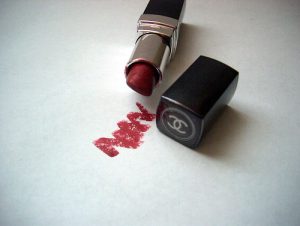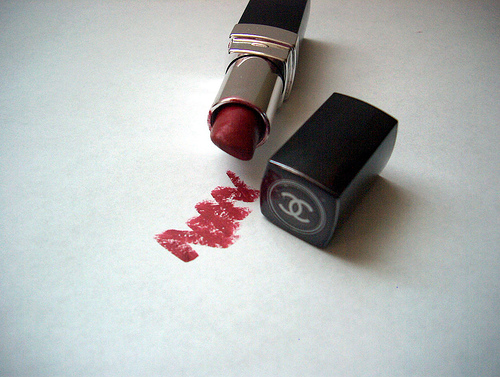A naked face, pale and unassuming, is a vulnerable face. As a media figure, the face that is turned out to the world should be one that commands attention and respect, one that exudes self-assuredness.

By swivelling open a tube of deep red lipstick, everyday women believe that they’ve opened themselves up to passion, channeled an innate sexuality, and will radiate both confidence and personal conviction.
When you think about it, red lipstick is an aesthetic choice that holds numerous perceived “benefits” to those who choose to wear it.
However, according to the BBC, it is a colour that is too scandalous to be used in their regular daytime programming, one that Jezebel.com comically refers to it as the “serial murderer of youthful innocence.”
In an attempt to filter and acknowledge the influence of the media on young children, the network issued new wardrobe guidelines that prohibits female hosts on youth-oriented programs from wearing red lipstick. BBC wants only positive, not oversexualized, role models representing them.
“We know that a lot of young girls will look at how our presenters are dressed, and no they shouldn’t look too sexy,” said BBC executive editor Melissa Hardinge, as reported by the Daily Mail.
No one wants toddlers traipsing around with red lipstick smeared all over their innocent little faces. But I am consistently impressed and confused at the public uproar about this colour. What’s the big deal? Red is just a colour, a happy colour that makes people feel good.
It’s 2014, is makeup really supposed to hold any deep significance anymore? Do the negative associations about red lips have any ground in today’s society?
On its own, the colour red is undeniably evocative. Studies have shown that exposure to it stimulates the senses, boosts physical energy, and can even increase heart rate and
adrenaline. Some East Asian cultures even consider it to be good luck, or the colour of purity. Its associations are resoundingly positive and uplifting.
But it’s the close relationship to sex that is still off-putting to some. At one point in time, the use of lipstick was condemned. The Catholic Church compared it to satanic worship, and associated it with marginalized groups like prostitutes and the lower class.
It would explain why, in my own experience wearing it, I have had negative reactions. One elderly woman in particular hissed at her friend while walking by that “only hussies wear that colour.” The remark demonstrated that, absurdly enough, some people still cannot divide the colour from its implications.
The term “oversexualized” should be used to define actions more so than appearances. How can a colour alone accurately represent a woman’s personality or agenda? And how come we get worked up about its influence on the public when there hasn’t been any evidence of a negative influence?
Rich lipstick today can connote strength, power and luxury. However, it could just be worn with the intent of experimenting and looking good. Women don’t necessarily wear lipstick to cause a stir — it’s these unjustified assumptions about appearances that cause trouble.
Given its history and reception, it would be easy to assume that rouge is reserved for “hussies” or “harlots.”
But hold your head high, and coyly blow a kiss to those passing judgement, because ladies wear red lipstick too.




